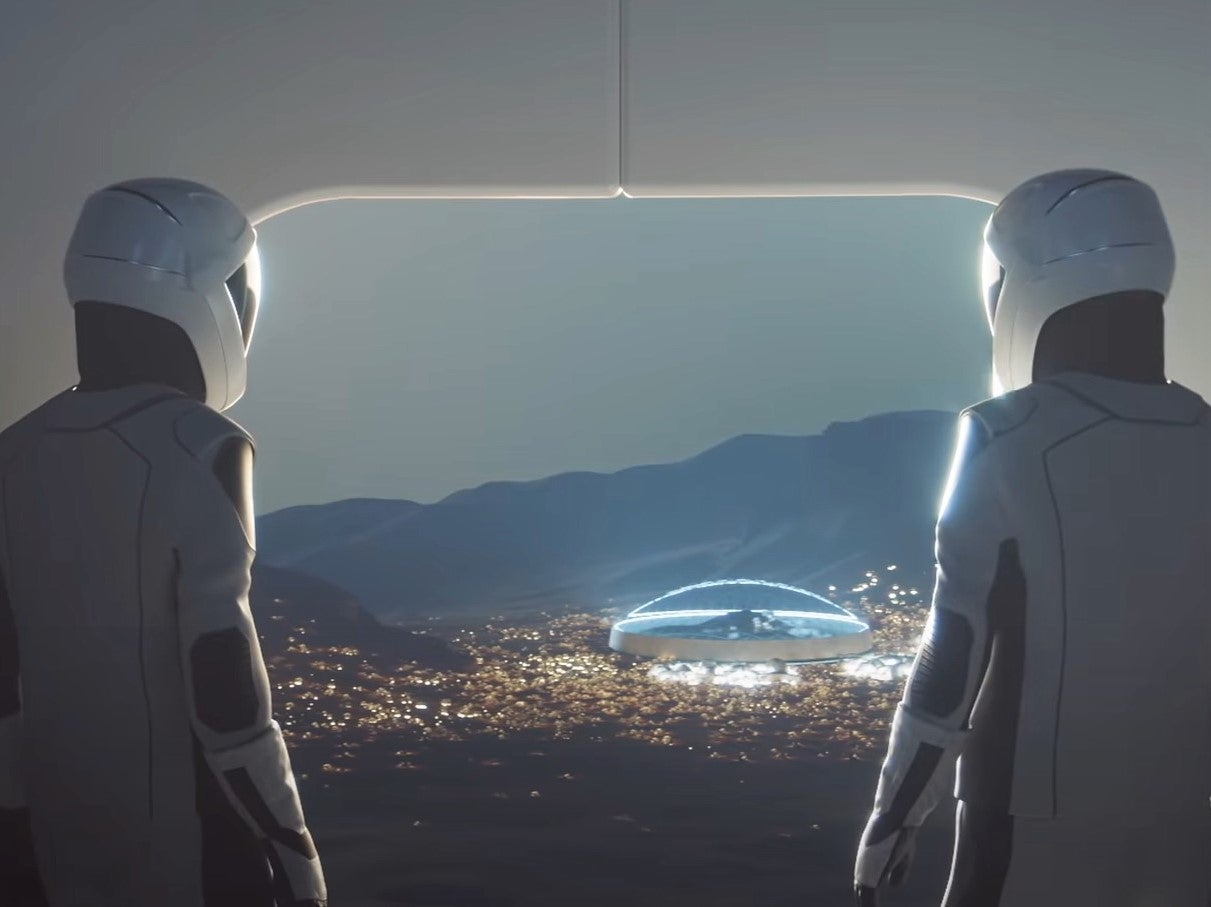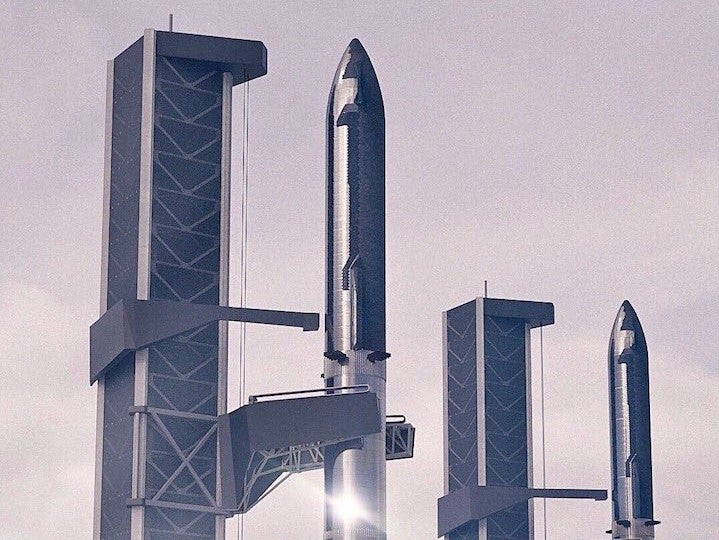Elon Musk shares simulation of trip to Mars aboard Starship
‘This will be real in our lifetime,’ says SpaceX boss

Your support helps us to tell the story
From reproductive rights to climate change to Big Tech, The Independent is on the ground when the story is developing. Whether it's investigating the financials of Elon Musk's pro-Trump PAC or producing our latest documentary, 'The A Word', which shines a light on the American women fighting for reproductive rights, we know how important it is to parse out the facts from the messaging.
At such a critical moment in US history, we need reporters on the ground. Your donation allows us to keep sending journalists to speak to both sides of the story.
The Independent is trusted by Americans across the entire political spectrum. And unlike many other quality news outlets, we choose not to lock Americans out of our reporting and analysis with paywalls. We believe quality journalism should be available to everyone, paid for by those who can afford it.
Your support makes all the difference.Elon Musk has shared a five-minute animation of what a trip to Mars aboard a Starship rocket might look like.
The SpaceX CEO hopes to establish a permanent human colony on the Red Planet over the coming decades, with the first crewed missions expected to take place by 2030.
The video demonstrates how the Starship rocket and its accompanying Super Heavy booster will launch from a futuristic space port – presumably the Starbase facility in Texas where it is being developed – before refuelling in orbit and continuing its seven-month journey to Mars.
Both the booster and the Starship rocket land vertically, allowing them to be reused for future missions.
“A fully and rapidly reusable launch vehicle is key to a future in which humanity is out exploring the stars,” SpaceX wrote in a tweet accompanying the video.
Mr Musk added: “This will be real in our lifetime.”
SpaceX is currently preparing for the first ever orbital test of its Starship craft, which will see it lift off from Starbase and travel around the Earth for 90 minutes, before landing off the coast of Hawaii.
In a presentation last week, Mr Musk said the 119-metre rocket would likely take flight at some point next month, though regulatory approval and further technical developments were still required.
“We have gotten a rough indication there may be an approval in March,” the tech billionaire said, in what was the first major Starship update in more than two years.
Only one previous high-altitude flight test of a Starship ended with the rocket landing in one piece, with the majority resulting in spectacular explosions.
Once development is completed, SpaceX plans to mass produce Starship rockets in order to build a 1,000-strong fleet capable of transporting people and cargo around the Solar System.

Fundamental to realising the goal of making humanity a multi-planet species is reducing the cost of space travel, which is why so much focus has been placed on reusability.
“If aircraft were not reusable, how much would an airline ticket cost?” Mr Musk said, adding that the Super Heavy booster could theoretically be reused every hour.
Each launch could eventually cost as little as $10 million per flight, according to Mr Musk, which he described as “crazy low” and “ridiculously good” by current space standards.

Join our commenting forum
Join thought-provoking conversations, follow other Independent readers and see their replies
Comments